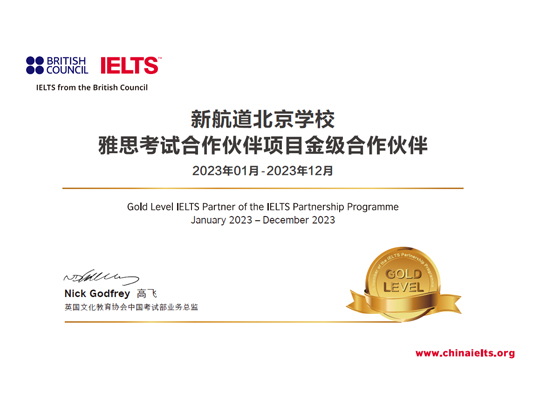当前位置:首页 > 雅思频道 > 雅思口语 > 雅思口语Part 3如何拓展思路?告别“没话说”的尴尬!
发布时间:2025-06-19 关键词:雅思口语Part 3
摘要:攻克雅思口语Part 3的“没话说”困境,关键在于系统性地拓展思维深度和广度,并掌握有效的论证技巧。告别尴尬,你需要以下策略:

雅思口语Part 3的核心难点是话题抽象、问题开放、需要逻辑分析和深度表达。但别慌!掌握这几个技巧,让你的思路像泉涌一样停不下来:
一、拆解题目,锁定关键词
例如:“Why do some people prefer to travel alone while others prefer group tours?”
→ 关键词:travel alone vs. group tours + reasons
例如:“How can technology improve education in the future?”
→ 关键词:technology + education + future
技巧:用笔圈出题目中的对比词(如“alone vs. group”)、领域词(如“education”)、时间词(如“future”),明确回答方向。
自问自答式扩展
对每个关键词发散提问:
Why?(原因)
How?(方式)
What if?(假设后果)
Compare with?(对比差异)
例如:
Why do people travel alone? → 自由安排行程、自我探索、逃避社交压力。
How does group tour work? → 固定路线、导游讲解、社交互动。
What’s the impact? → 独自旅行可能孤独,跟团可能失去灵活性。
二、用“框架”快速搭建逻辑
1. 因果分析法(最适合“Why/How”类问题)
模板:
直接原因:Because...(客观因素)
深层原因:Because...(主观需求/文化背景)
结果/影响:This leads to.../Therefore...
举例:
Q: Why do young people prefer online shopping?
A:
Direct reason: It’s more convenient—they can order anytime without going out.
Deeper reason: They grew up with technology and value efficiency.
Impact: This changes traditional retail industries.
2. 对比论证法(适合“A vs. B”类问题)
模板:
Similarities: Both...(共同点)
Differences: However, A focuses on... while B emphasizes...
Personal preference: I think... because...
举例:
Q: What’s the difference between learning from books and videos?
A:
Similar: Both provide knowledge.
Difference: Books require imagination but take time, while videos are visual and faster.
My choice: I prefer combining both—videos for quick understanding, books for deep thinking.
3. 趋势预测法(适合“future/change”类问题)
模板:
Current situation: Now.../Currently...
Future trend: But in the future.../However, with..., it will...
Reason: Because.../Due to...
举例:
Q: Will AI replace teachers?
A:
Now: AI can handle basic teaching tasks like grading.
Future: But it can’t replace teachers completely because education needs human emotion and interaction.
Reason: Machines lack empathy and can’t inspire students like real teachers.
三、举例子!举例子!举例子!
雅思口语Part 3的回答必须具体! 抽象话题+具体例子=完美答案。
例子来源:
个人经历:你身边的故事、新闻案例、历史事件、影视情节。
素材:科技(AI、大数据)、环境(碳中和)、社会(少子化、老龄化)、文化(传统文化vs现代文化)。
举例技巧:
一句话概括+细节补充:
差例子:Traveling alone lets you explore yourself.
好例子:When I traveled alone in Japan last year, I had to use apps to navigate the subway, which made me realize how resourceful I could be.
四、积累“论据库”
提前准备以下通用角度,考场直接套用:
社会因素:
Technology(便利但缺乏人情味)
Urbanization(快节奏但压力大)
Globalization(文化交流但本土文化流失)
心理因素:
Young people: 追求个性、依赖科技、注重效率。
Older people: 重视传统、经验主义、抗拒变化。
利弊分析:
优点:Efficiency, convenience, accessibility...
缺点:Lack of human touch, privacy issues, environmental cost...
五、高频话题实战演练
Topic 1: “Some people say that money brings happiness. What’s your opinion?”
拆解:Money vs. Happiness + 因果关系
答案框架:
承认部分真理:Money solves basic needs (e.g., food, health).
转折反驳:But after a certain point, more money doesn’t guarantee happiness.
举例:Lottery winners often feel lost without goals, or rich people suffer from loneliness.
结论:Happiness comes from relationships, achievements, and mental peace.
Topic 2: “How can cities reduce traffic congestion?”
拆解:Traffic problem + 解决方案
答案框架:
直接措施:Build more subways, limit car usage (e.g., license plate rules).
科技手段:Smart traffic lights, ride-sharing apps.
文化改变:Encourage remote work, promote biking.
举例:In Tokyo, people use public transport even if they’re wealthy.
雅思口语Part 3拼的不是词汇量,而是逻辑+例子!平时多对着话题库(雅思哥/知乎/BC真题)练习“自问自答”,考试时像聊天一样自然表达,轻松拿分!
新航道-用心用情用力做教育!
400-900-9767

